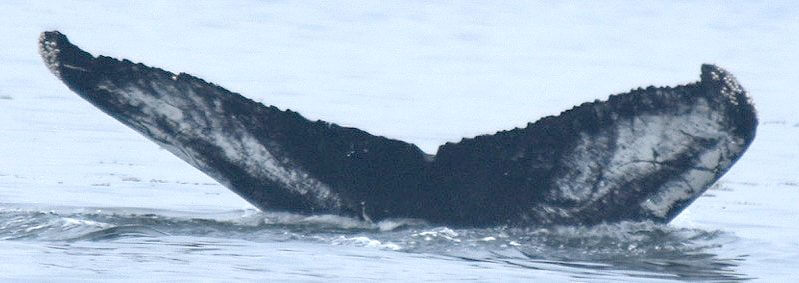H725, a.k.a. “High Heels”
Humpback Whale


-
ID number
H725
-
Sex
Female
-
Year of birth
2008
-
Known Since
2008
Distinctive traits
High Heels doit son nom à la marque en forme d’escarpin qui se trouvait sur son lobe droit en 2008. Depuis, cette marque s’est estompée, le patron de coloration de sa queue s’étant assombri.
Aujourd’hui, son identification exige un œil averti.
Life history
Born in 2008, H725 is one of Fleuret’s calves (H009).
Observations history in the Estuary
Years in which the animal was not observed Years in which the animal was observed
Latest news from the publications Portait de baleines
This animal is seen on September 6. Her “face” remains a mystery until she passes under the watchful eye of a member of the Mingan Island Cetacean Study (MICS), who recognizes her as H725, a.k.a. “High Heels”. This moniker refers to the shape of a clearly visible stiletto on her right lobe, which was already present back in 2008! Since then, this marking has faded, as H725’s tail has grown darker.
Born in 2008, H725 is one of Fleuret’s calves (H009). Fleuret is an “icon” of the Gulf of St. Lawrence. Encountered at a young age with her mother Pseudo (H008) in 1982 and frequently observed off Gaspé, Mingan and Anticosti Island, she has been seen on many occasions with newborns. She had her very first calf at the age of 9. Last summer, another one of her calves, born in 2015, spent much of the season in the Marine Park area. Nicknamed “Picotine“, it was recognizable by its small size, its scarred dorsal fin and by the fact that it did not lift its tail when it dove.
Long before they arrive at their summer feeding grounds, what are the first days of life like for these calves? Birth takes place in temperate waters, which is an important factor for the survival of the newborn, which lacks a sufficiently thick layer of blubber to survive in cold water. The calf is usually born tail first, and quickly moves to the surface to take its first breath. The calf is steered by its mother, as otherwise the absence of air in its lungs could cause it to sink. Additionally, she leads her offspring away from the placenta, which can attract predators.
The duo is escorted by one or more individuals for a few weeks. The calf suckles its mother 30 to 40 times a day. After a few weeks the young become less active, “maximizing” their energy to grow and prepare for their migration to higher-risk waters. How do we determine the age of newborns? By the inclination of their dorsal fin. For the first few days after birth it is soft, and then hardens with time. The fin of a calf less than one week old will be slanted at about 45°, while after about two weeks it will be straight (90°).



